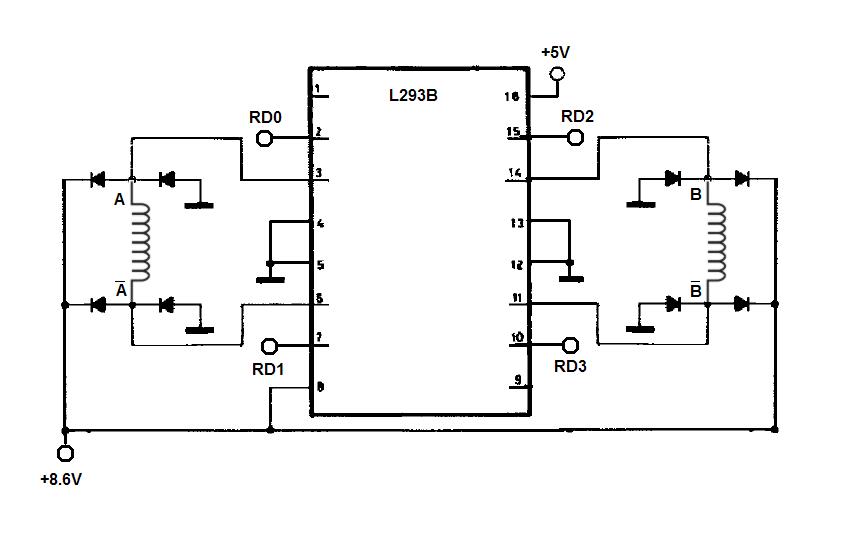Stepper motor control with the PIC
Original Assignment
The project is to use an interrupt to achieve stepper motor control along arbitrary motion profiles (e.g., mathematical functions of time, including constant velocity profiles). For example, if your interrupt is at 1 ms, you can compare your desired step count at the current time to the desired step count at the current time and step the motor forward, backward, or not at all, as appropriate. A simpler variant of this is constant speed control: the main program sets the speed, and the interrupt determines whether or not to step the motor at each interrupt time. Your documentation must provide evidence that the interrupt service routine always completes in less time than the time between interrupts (e.g., you can use the oscilloscope and look at a pin going high at the beginning of the ISR and low at the end).
Also, stepper motors tend to have relatively low torque, but are capable of high speeds. To improve the torque, we can add a gearhead or other transmission element. It is convenient to have the motor and gearhead in a single package, so if you see a relatively inexpensive stepper motor + gearhead combination in an appropriate size, let us know!
Overview
Circuit
A DIP16-L293B quad push pull driver is used to control the two windings for the bipolar stepper motor. Inputs from the PIC coming from channels RD0-RD3 are fed into the chip's inputs. The blue and red wires pertaining to one set of windings connect to pins 3 and 5 of the L293B, and the white and yellow wires for the other half go to pins 11 and 14.
